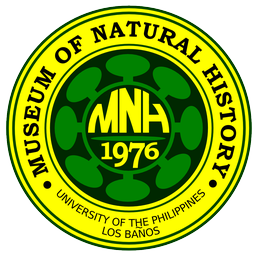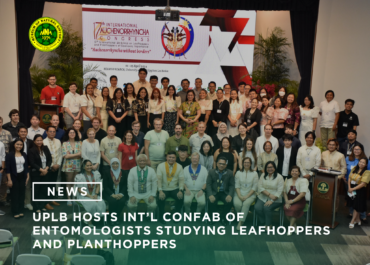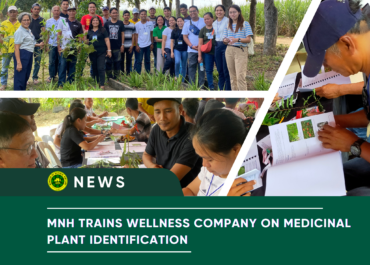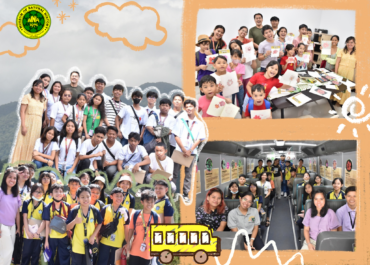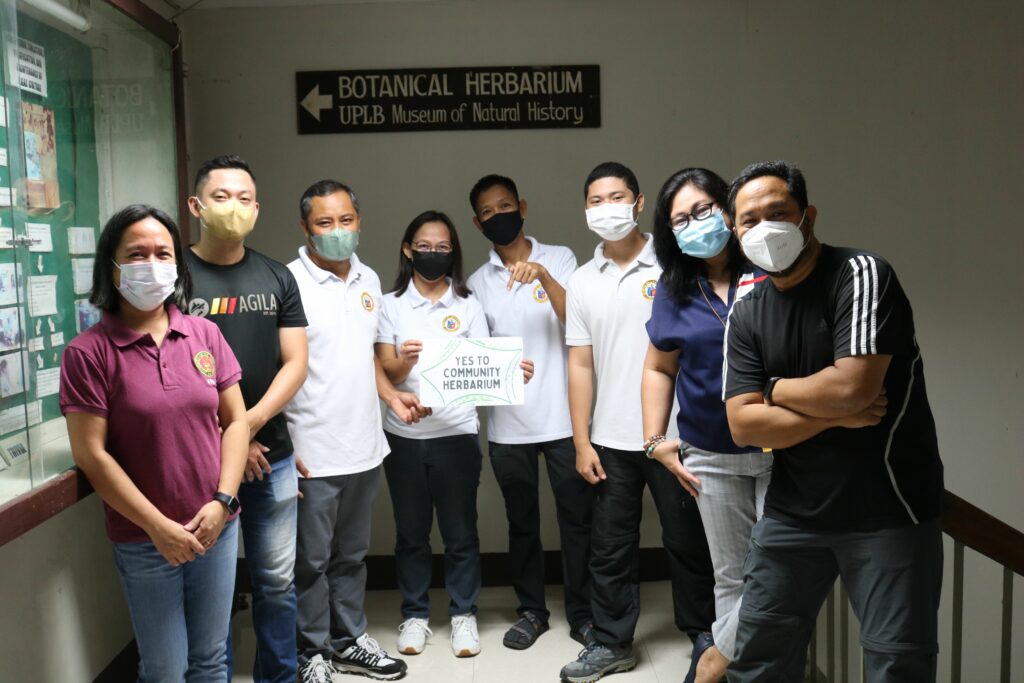
The UPLB Museum of Natural History recently partnered with the Office of the City Environment and Natural Resources (OCENR) – Legazpi City, Albay for the latter’s capacity development program which seeks to prepare the agency’s constituents and stakeholders in planning for a community herbarium.
According to Florante A. Cruz, museum extension specialist and liaison for the partnership, the OCENR requested for the museum’s assistance in early 2022 when LGU representatives brought the idea of having a herbarium or biodiversity museum in the city.
“Herbaria have important roles in teaching and public outreach, aside from the usual purpose of being a basis for plant diversity and evolution studies,” Cruz said.
Arguably, herbarium collections are most valuable in their original institutional and geographical context since they can be considered as historical records linked to a time and place. Unfortunately, herbaria in the Philippines are mostly found in the academe and in natural history collections.
So, as public service, from 12-14 October 2022, the museum held six learning sessions on herbarium management and operations via online conferencing which were attended by the staff of the OCENR-Legazpi City and more than 100 BS Biology and BS Forestry students of Bicol University. This was then followed by a lakbay-aral for identified staff of the OCENR-Legazpi City. They visited the University of the Philippines Los Baños Campus (UPLB) on 17-18 October 2022 for face-to-face activities.
Supportive agencies during program opening
The learning event was formally opened on 12 October via Zoom and it was highlighted by overwhelming support from the LGU and the presence of faculty and students of Bicol University.
Present during the opening program were Legazpi City Mayor, Hon. Carmen Geraldine B. Rosal; Engr. Benju Q. Calleja, OIC City ENRO; Dr. Marian P. De Leon, MNH Director; Dean Carlo Galias, Bicol University Biology Division Chairperson; and Dr. Myla Niro, Bicol University Forestry Department Chairperson.
In her message, Mayor Rosal stressed the importance of such learning activity especially in Legazpi, a city with rich biodiversity. “We acknowledge the importance of these activities especially when we need to keep the richness of this God-given biodiversity not only abundant in Albay but in other parts of the country. In this time of disasters, we are reminded to maximize our efforts in conserving our biodiversity,” said Rosal.
Meanwhile, OIC City ENRO Engr. Calleja stressed the importance of mobilizing different sectors in their efforts towards biodiversity conservation. “We hope to fortify our linkages with the academe and involve key stakeholders in our undertakings toward biodiversity conservation,” said Engr. Calleja.
Giving rationale to the activities in discussing the program, OCENR staff For. Dean Waldo D. Lucena, herbaria are sources of critical information on the plant biodiversity of a region or locality and with this, Legazpi City will benefit from having its own community herbarium. “The herbarium has a great potential in revealing biogeographic information about Legazpi City, which will be a guide for us in making sound environmental policies,” said Lucena.
Aiming to facilitate community-driven environmental stewardship, the LGU-Legazpi City thus tapped the Bicol University to join the online sessions. Students from the university joined the online lectures, learning from the MNH curators who taught them about herbarium management and operations.
MNH’s Director, Dr. Marian P. De Leon gave her support to the collaboration, hoping that the learning opportunity may inspire other cities and municipalities to push for activities geared towards protecting our environment. “Ang pagsusulong ng pagkakaroon ng herbaria ng mahahalagang likas na yaman ay pagkilala sa kahalagahan ng Lungsod ng Legazpi sa mga ito. Naniniwala ako at aking mga kasama sa MNH na mapapagtagumpayan ng Legazpi City ang patatayo nito ng community herbaria dahil kitang-kita ang pagtutulungan ng OCENR, Legazpi LGU, at ng academe,” she said.
Educators from the Bicol University, on the other hand, also expressed their appreciation and support for the initiative which they believe will equip their forestry and agriculture students with important skills and develop the students’ ideas for theses in order to complete their degrees.
Online sessions delivered by museum personnel
Six online sessions were conducted by museum curators and staff during the three days. Prof. Pastor L. Malabrigo, Jr. and Dr. Rosalie C. Mendoza of the MNH’s Forestry Herbarium and Wood Collection topbilled the first day, giving reviews on dendrology and wood identification.
Prof. Annalee S. Hadsall and Prof. Ivy Amor F. Lambio of the MNH’s Botanical Herbarium served as speakers on the second day, further talking on plant systematics and herbarium management. For the last two sessions, Botanical Herbarium university researcher Michelle A. San Pascual and Mycological Herbarium curator Dr. Jennifer M. Niem focused on actual operations done in their respective herbaria. On the average, 120 participants attended the six sessions, receiving individual certificates of attendance after each session.
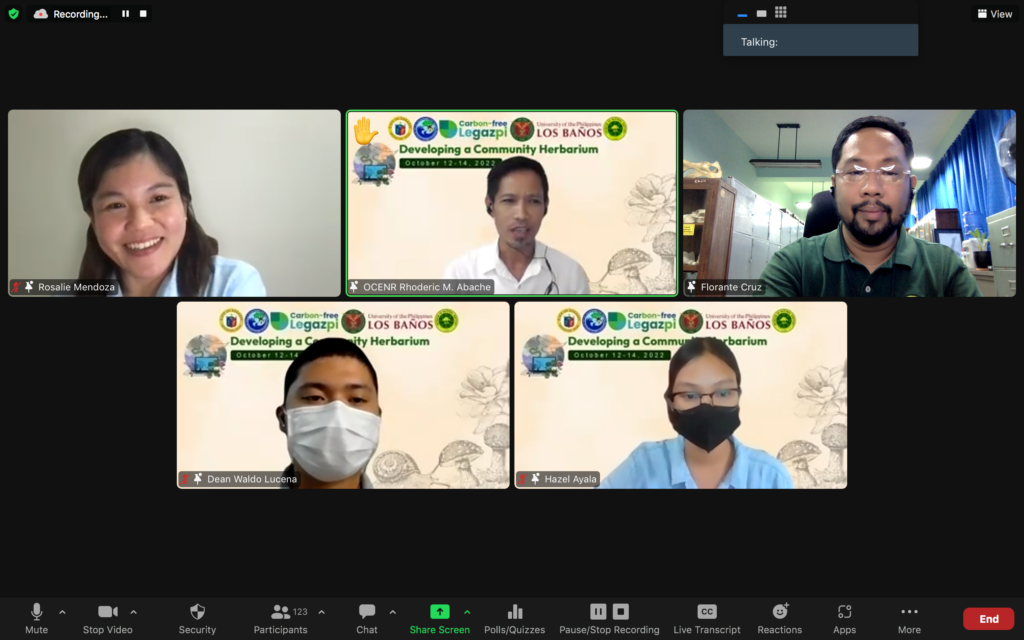
Face-to-face activities at UPLB
For their practical application of lectures attended in the online sessions, four OCENR-Legazpi City staff visited the UPLB campus on October 17-18, 2022.
With assistance from the museum’s technicians, OCENR-Legazpi staff conducted field work inside the MNH’s Hortorium on the first day. There, they were re-trained on the proper collection and preparation of botanical and mycological specimens from the field. The participants also did other facets of herbarium operations at the Botanical Herbarium.
On the second day, the participants visited the different herbarium collections inside UPLB. They first went to check out the MNH’s Forestry Herbarium and Wood Collection at the upper campus. The herbarium, registered as the Los Baños Collection (LBC) in the Index Herbariorum, houses a collection of roughly 13,000 specimens of forest-related plants over 18 genera and 103 species. They also visited the DOST-Forest Products Research and Development Institute’s herbarium and xylarium which has the most complete wood collection in the Philippines, having around 20,000 wood samples collected both locally and internationally.
From there, the visitors toured the Department of Forest Products and Paper Science Wood Collection and Laboratory, and the herbarium and laboratory facilities of the DENR-Ecosystems Research and Development Bureau.
At the end of the tour, the group visited the MNH’s Mycological Herbarium to process the macrofungi collected from the previous day’s activities. To cap off the two-day lakbay-aral, the OCENR-Legazpi City staff were also given access to the MNH’s Entomological Collection and the D.S. Rabor Wildlife Collection.
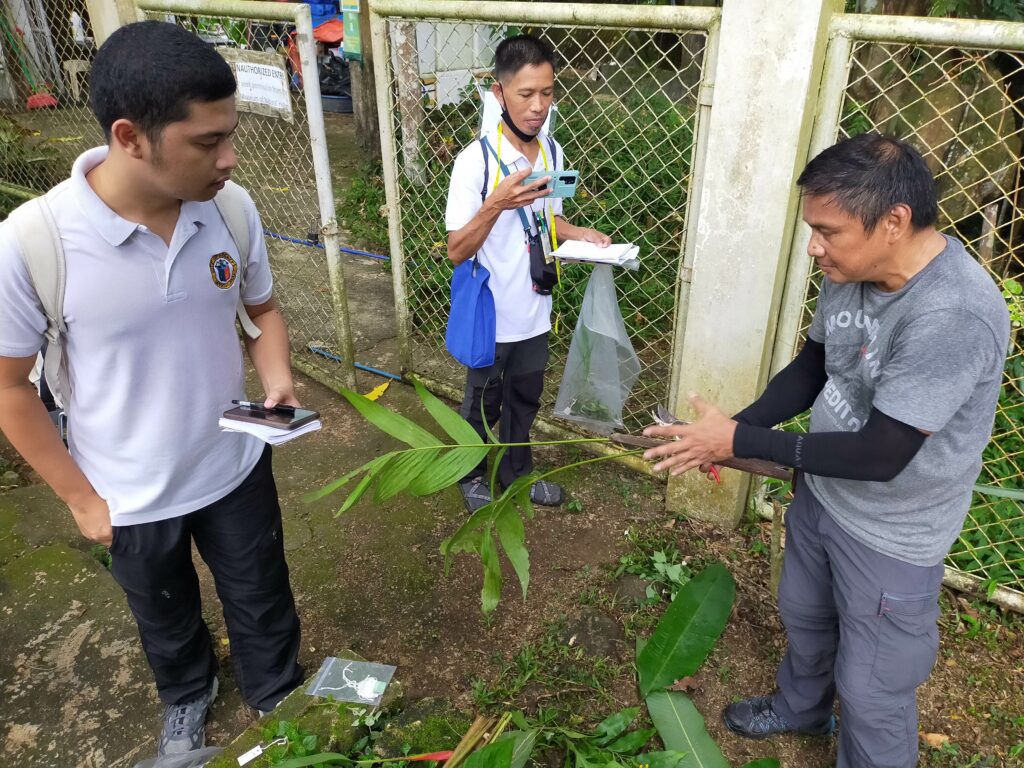
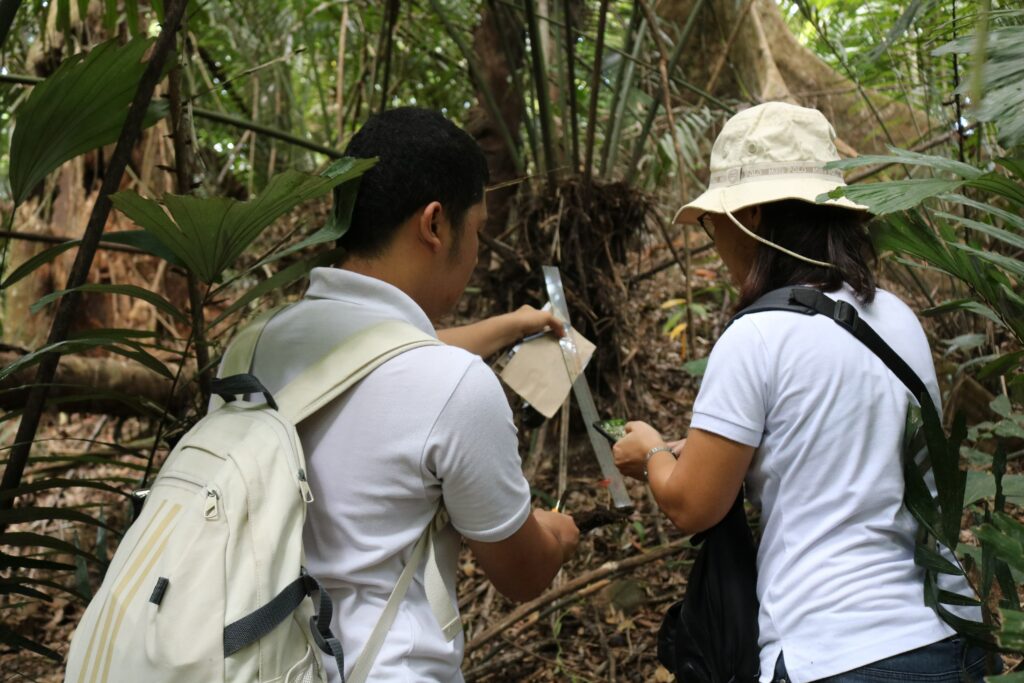
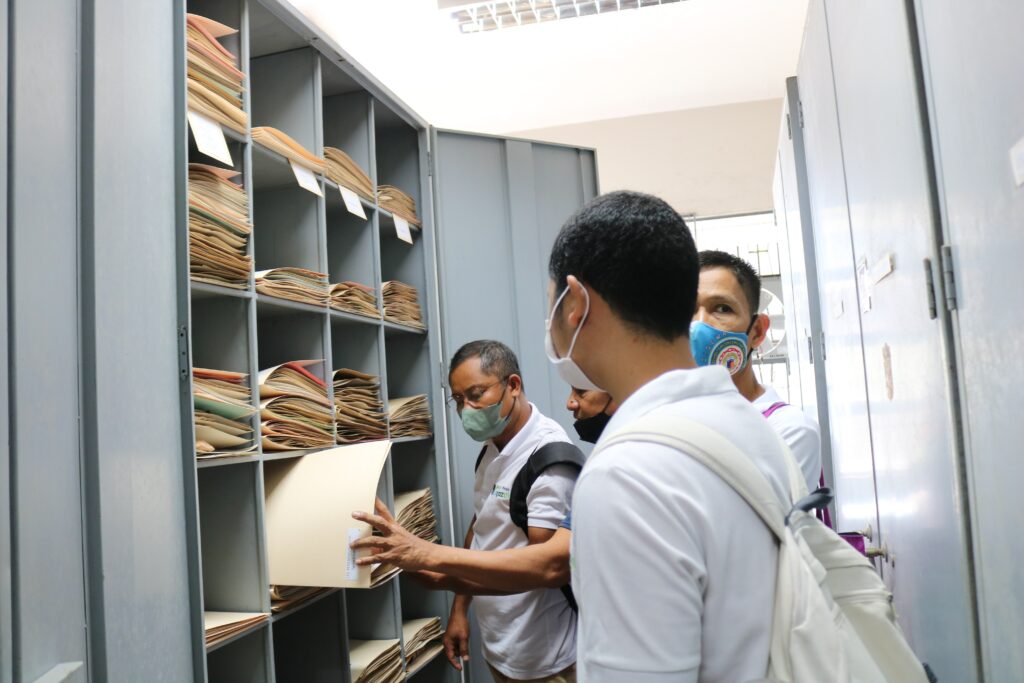
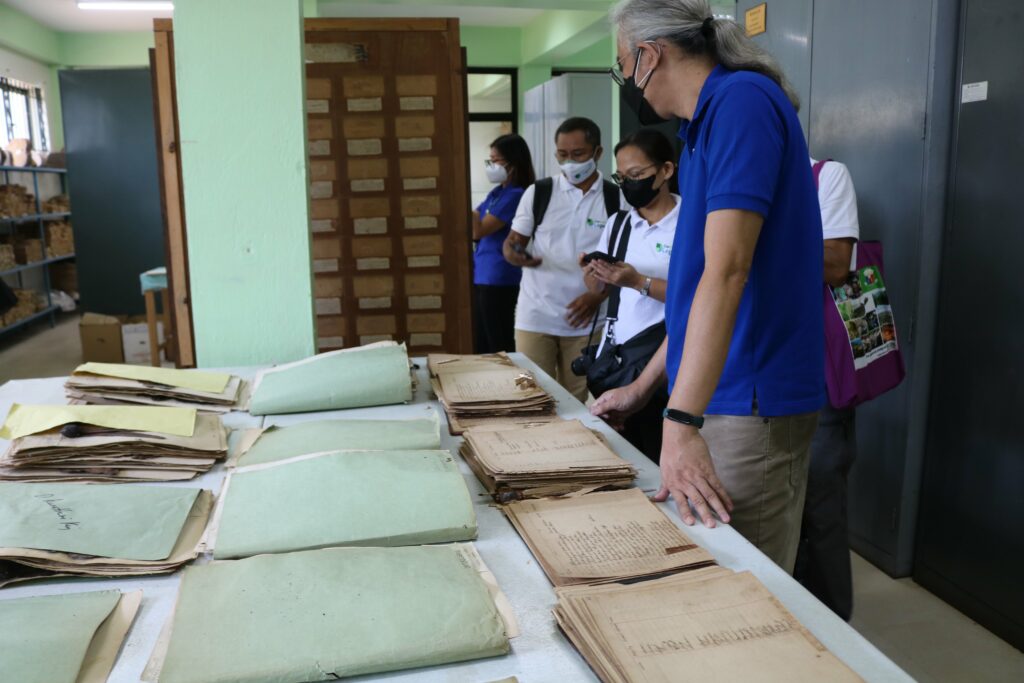
Search
Archives
Categories
- Announcement (21)
- Feature (21)
- News (141)
- Press Release (55)
- Research (4)
- Services (3)
